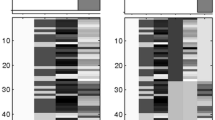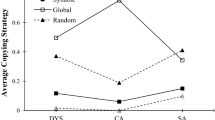Abstract
It is now thought that the cerebellum is involved in the acquisition of “language dexterity” in addition to its established role in motor skill acquisition and execution. Mild cerebellar impairment, therefore, provides a possible explanation of a range of problems shown by children with dyslexia. The authors have established suggestive evidence in support of this hypothesis in tests of balance and of time estimation. In a further test of the hypothesis, a battery of clinical tests for cerebellar impairment, including tests of muscle tone and of coordination, was administered to matched groups of children with dyslexia and control children aged 10, 14, and 18 years (55 subjects in all). The children with dyslexia showed highly significant impairments on all the cerebellar tests, and significant impairment compared even with reading age controls on 11 of the 14 tasks. Deficits on the majority of tests were among the largest found in our research program. The findings, therefore, provide further intriguing evidence of cerebellar impairment in dyslexia. We speculate that the well-established phonological deficits in dyslexia may arise initially from inefficient articulatory control attributable to cerebellar impairment.
Similar content being viewed by others
References
American Psychiatric Association 1987.Diagnostic and Statistical Manual of Mental Disorders, 3rd edition, Revised. Washington DC: American Psychiatric Association.
Akshoomoff, N. A., and Courchesne, E. 1992. A new role for the cerebellum in cognitive operations.Behavioral Neuroscience 106:731–38.
Albus, J. S. 1971.A Theory of Cerebellar Function. Mathematical Biosciences 10:25–61.
Augur, J. 1985. Guidelines for teachers, parents and learners. In M. Snowling (ed.),Children’s Written Language Difficulties. Windsor: NFER Nelson.
Barinaga, M. 1996. The Cerebellum: Movement coordinator or much more?Science 272:482–83.
Boder, E. 1973. Developmental dyslexia: A diagnostic approach based on three atypical spelling-reading patterns.Developmental Medicine and Child Neurology 15:663–87.
Bradley, L., and Bryant, P. E. 1983. Categorising sounds and learning to read: A causal connection.Nature 301:419–21.
Bryant, P., and Goswami, U. 1986. Strengths and weaknesses of the reading level design.Psychological Bulletin 100:101–03.
Cohen, J. 1969.Statistical Power Analysis for the Behavioral Sciences. New York: Academic Press.
Courchesne, E., Townsend, J., Akshoomoff, N. A., Saitoh, O., Yeungcourchesne, R., Lincoln, A. J., James, H. E., Haas, R. H., Screibman, L., and Lau, I. 1994. Impairment in shifting attention in autistic and cerebellar patients.Behavioral Neuroscience 108:848–65.
Decety, J., Sjoholm, H., Ryding, E., Stenberg, G., and Ingvar, D. H. 1990. The cerebellum participates in mental activity-tomographic measurements of regional cerebral blood flow.Brain Research 535:313–17.
Denckla, M. B., and Rudel, R. G. 1978. Anomalies of motor development in hyperactive boys.Annals of Neurology 3:231–33.
Denckla, M. B., Rudel, R. G., Chapman, C., and Krieger, J. 1985. Motor performance in dyslexic children with and without attentional disorders.Archives of Neurology 42:228–31.
Denckla, M. B. 1985. Motor coordination in children with dyslexia: Theoretical and clinical implications. In F. H. Duffy and N. Geschwind (eds.),Dyslexia: A Neuroscientific Approach. Boston: Little Brown.
Denckla, M. B., and Rudel, R.G. 1976. Rapid ‘Automatized’ naming (R.A.N.). Dyslexia differentiated from other learning disabilities.Neuropsychologia 14:471–79.
Dow, R. S., and Moruzzi, G. 1958.The Physiology and Pathology of the Cerebellum. Minneapolis: University of Minnesota Press.
Eccles, J. C, Ito, M., and Szentagothai, J. 1967.The Cerebellum as a Neuronal Machine. New York: Springer-Verlag.
Fawcett, A. J., and Nicolson, R. I. 1995a. Persistent deficits in motor skill for children with dyslexia.Journal of Motor Behavior 27:235–40.
Fawcett, A. J., and Nicolson, R. I. 1995b. Persistence of phonological awareness deficits in older children with dyslexia.Reading and Writing: An Interdisciplinary Journal 7:361–76.
Fiez, J. A., Petersen, S. E., Cheney, M. K., and Raichle, M. E. 1992. Impaired non-motor learning and error detection associated with cerebellar damage: A single case study.Brain 115:155–78.
Fowler, A. 1991. How early phonological development might set the stage for phoneme awareness. In S. Brady and D. Shankweiler (eds.),Phonological Processes in Literacy. Hillsdale, NJ: Lawrence Erlbaum Associates.
Frank, J., and Levinson, H. N. 1973. Dysmetric dyslexia and dyspraxia: Hypothesis and study.Journal of American Academy of Child Psychiatry 12:690–701.
Galaburda, A. M., Rosen, G. D., and Sherman, G. F. 1989. The neural origin of developmental dyslexia: Implications for medicine, neurology and cognition. In A. M. Galaburda (ed.),From Reading to Neurons. Cambridge, MA: MIT Press.
Gao, J-H., Parsons, L. M., Bower, J. M., Jinhu, X., Li, J., and Fox, P. T. 1996. Cerebellum implicated in sensory acquisition and discrimination rather than motor control.Science 272:545–47.
Glickstein, M. 1993. Motor skills but not cognitive tasks.Trends in Neuroscience 16:450–51.
Haslum, M. N. 1989. Predictors of dyslexia?Irish Journal of Psychology 10:622–30.
Holmes, G. 1917. The symptoms of acute cerebellar injuries due to gunshot injuries.Brain 40:461–535.
Holmes, G. 1939. The cerebellum of man.Brain 62:1–30.
Ito, M. 1990. A new physiological concept on cerebellum.Revue Neurologique (Paris) 146:564–69.
Ito, M. 1993. Movement and thought: Identical control mechanisms by the cerebellum.Trends in Neuroscience 16:448–50.
Ivry, R. B., and Keele, S. W. 1989. Timing functions of the cerebellum.Journal of Cognitive Neuroscience 1:136–52.
Jenkins, I. H., Brooks, D. J., Nixon, P.D., Frackowiak, R. S. J., and Passingham, R. E. 1994. Motor sequence learning: A study with positron emission tomography.Journal of Neuroscience 14:3775–90.
Krupa, D. J., Thompson, J. K. and Thompson, R. F. 1993. Localization of a memory trace in the mammalian brain.Science 260:989–91.
Leiner, H. C., Leiner, A. L., and Dow, R. S. 1989. Reappraising the cerebellum: What does the hindbrain contribute to the forebrain?Behavioural Neuroscience 103:998–1008.
Leiner, H. C., Leiner, A. L., and Dow, R. S. 1993. Cognitive and language functions of the human cerebellum.Trends in Neuroscience 16:444–47.
Levinson, H. N. 1988. The cerebellar-vestibular basis of learning disabilities in children, adolescents and adults: Hypothesis and study.Perceptual and Motor Skills 67:983–1006.
Liberman, A. M. 1957. Some results of research on speech perception.Journal of the Acoustical Society of America 29:117–23.
Locke, J. L. 1993.The Child’s Path to Spoken Language. Cambridge, MA: Harvard University Press.
Lovegrove, W. J., Garzia, R. P., and Nicholson, S. B. 1990. Experimental evidence of a transient system deficit in specific reading disability.Journal of the American Optometric Association 61:137–46.
Marr, D. 1969. A Theory of Cerebellar Cortex.Journal of Physiology 202:437–70.
Nicolson, R. I., and Fawcett, A. J. 1990. Automaticity: A new framework for dyslexia research?Cognition 35:159–82.
Nicolson, R. I., and Fawcett, A. J. 1994a. Comparison of deficits in cognitive and motor skills among children with dyslexia.Annals of Dyslexia 44:147–64
Nicolson, R. I., and Fawcett, A. J. 1994b. Reaction times and dyslexia.Quarterly Journal of Experimental Psychology 47A:29–48.
Nicolson, R. I., and Fawcett, A. J. 1994c. Spelling remediation for dyslexic children: A skills approach. In G. D. A. Brown and N. C. Ellis (eds.),Handbook of Spelling: Theory, Process and Intervention. Chichester: Wiley.
Nicolson, R. I., and Fawcett, A. J. 1995. Dyslexia is more than a phonological disability.Dyslexia: An International Journal of Research and Practice 1:19–37.
Nicolson, R. I., Fawcett, A. J., and Dean, P. 1995. Time estimation deficits in developmental dyslexia: Evidence for cerebellar involvement.Proceedings of the Royal Society 259:43–47.
Orton Dyslexia Society 1995. Definition of dyslexia: Report from committee of members.Perspectives 21:16–17.
Paulesu, E., Frith, C. D., and Frackowiak, R. J. 1993. The neural correlates of the verbal component of working memory.Nature 362:342–45.
Psychological Corporation. 1993.Wechsler Objective Reading Dimensions. Sidcup, U.K.: The Psychological Corporation, Europe.
Ramsay, D. S. 1984. Onset of duplicated syllable babbling and unimanual handedness in infants: Evidence for developmental change in hemispheric specialization?Developmental Psychology 20:64–71.
Rudel, R. G. 1985. The definition of dyslexia: Language and motor deficits. In F. H. Duffy and N. Geschwind (eds.),Dyslexia: a Neuroscientific Approach to Clinical Evaluation. Boston, MA: Little Brown.
Shankweiler, D., Crain, S., Katz, L., Fowler, A. E., Liberman, A. M., Brady, S. A., Thornton, R., Lundquist, E., Dreyer, L., Fletcher, J. M., Stuebing, K. K., Shaywitz, S. E., and Shaywitz, B. A. 1995. Cognitive profiles of reading-disabled children—comparison of language-skills in phonology, morphology, and syntax.Psychological Science 6:149–56.
Share, D. L., McGee, R., and Silva, P. A. 1986. Motor function in dyslexic children with and without attentional disorders.Journal of Human Movement Studies 6:313–20.
Silveri, M. C., Leggio, M. G., and Molinari, M. 1994. The cerebellum contributes to linguistic production: A case of agrammatic speech following a right cerebellar lesion.Neurology 44:2047–2050.
Snowling, M., and Hulme, C. 1994. The development of phonological skills.Philosophical Transactions of the Royal Society of London B 346:21–27.
Stanovich, K. E. 1988. Explaining the differences between the dyslexic and the garden-variety poor reader: The phonological-core variable-difference model.Journal of Learning Disabilities 21:590–612.
Stein, J. F. 1989. Visuospatial perception and reading problems.Irish Journal of Psychology 10:521–33.
Stein, J. F., and Glickstein, M. 1992. Role of the cerebellum in visual guidance of movement.Physiological Reviews 72:972–1017.
Studdert-Kennedy, M. 1991. Language development from an evolutionary perspective. In N. Krasnegor, D. Rumbaugh, R. Schiefelbusch, and M. Studdert-Kennedy eds.),Language Acquisition: Biological and Behavioral Determinants. Hillsdale, NJ: Lawrence Erlbaum Associates.
Thach, W. T. 1996 in press. On the specific role of the cerebellum in motor learning and cognition: Clues from PET activation and lesion studies in man.Brain and Behavioural Sciences.
Thomson, M. E. 1990.Developmental Dyslexia: Its Nature, Assessment and Remediation. (3rd ed.). London: Whurr.
Vellutino, F. R. 1979.Dyslexia: Theory and Research. Cambridge, MA: MIT Press.
Wechsler, D. 1976.Wechsler Intelligence Scale for Children Revised (WISC-R). Sidcup, U.K.: The Psychological Corporation, Europe.
Wise, B. W., and Olson, R. K. 1995. Computer-based phonological awareness and reading-instruction,Annals of Dyslexia 45:99–122.
Wolf, M. 1991. Naming speed and reading: The contribution of the cognitive neurosciences.Reading Research Quarterly 26:123–41.
Wolff, P., Michel, G. F., Ovrut, M., and Drake, C. 1990. Rate and timing precision of motor coordination in developmental dyslexia.Developmental Psychology 26:349–59.
World Federation of Neurology 1968.Report of Research Group on Dyslexia and World Illiteracy. Dallas: WFN.
Yap, R. L., and van der Leij, A. 1994. Testing the automatization deficit hypothesis of dyslexia via a dual task paradigm.Journal of Learning Disabilities 27:660–65.
Author information
Authors and Affiliations
Rights and permissions
About this article
Cite this article
Fawcett, A.J., Nicolson, R.I. & Dean, P. Impaired performance of children with dyslexia on a range of cerebellar tasks. Annals of Dyslexia 46, 259–283 (1996). https://doi.org/10.1007/BF02648179
Issue Date:
DOI: https://doi.org/10.1007/BF02648179




